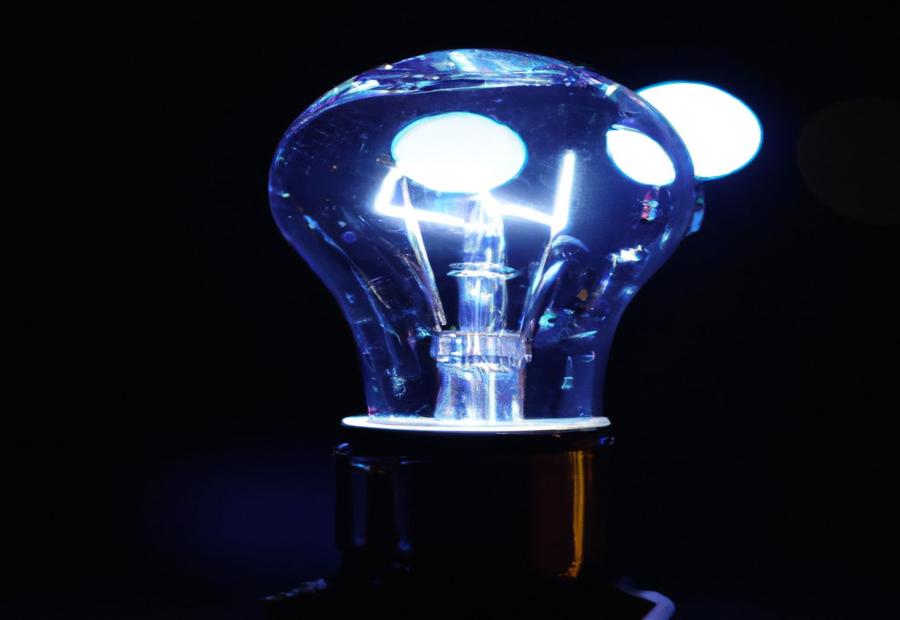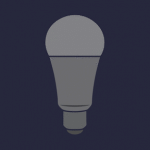Last Updated on 10 months by Francis
.jpg)
LED lights have become increasingly popular for their energy efficiency and longevity. However, like any other electrical component, they are not immune to aging and wear. In this article, we will explore the lifespan of LED lights and whether they have a shelf life.
Before delving into the shelf life of LED lights, let’s first understand what a shelf life refers to. A shelf life refers to the duration for which a product remains usable or effective while stored on a shelf or in its packaging, without experiencing significant deterioration.
LED lights are known for their long lifespan compared to traditional incandescent bulbs. The typical lifespan of LED lights can range from 25,000 to 50,000 hours or more, depending on various factors. These factors include the quality of the LED chips, the design and construction of the light fixture, and the operating conditions such as temperature and humidity.
But do LED lights have a specific shelf life? LED lights themselves do not technically expire or become unusable while stored in their original packaging. However, over time, as LED lights age and are exposed to environmental factors, their performance may deteriorate. This can lead to a decrease in brightness or color accuracy.
To extend the lifespan of LED lights, proper usage, installation, and maintenance are essential. Installing LED lights in well-ventilated areas, avoiding excessive heat or humidity, and using them within their specified operating conditions can significantly prolong their lifespan. Regular cleaning and proper temperature management further contribute to maximizing their longevity.
There are some misconceptions surrounding LED light lifespan, such as the belief that LED lights will never need to be replaced. While LED lights do have a longer lifespan compared to traditional bulbs, they will eventually degrade and lose their brightness over time.
- LED lights have a long lifespan: LED lights typically last for a long time, making them a cost-effective lighting option.
- Proper usage and maintenance can extend LED light lifespan: Following recommended installation guidelines, regular cleaning, and temperature management can help extend the lifespan of LED lights.
- LED lights do not have a shelf life: Unlike some other lighting technologies, LED lights do not expire or have a specific shelf life. However, their brightness may degrade over time.
Contents
What Is a Shelf Life?
“What Is a Shelf Life?
Shelf life refers to the period during which a product can be stored and used before it deteriorates or becomes unsafe. It is a term commonly used to describe the expiration date or best before date of a product. In the context of perishable goods like food, it signifies the time within which the product remains fresh and safe for consumption. For non-perishable items, such as LED lights, shelf life refers to the duration they can be stored without significant degradation in performance or quality. It is important to note that LED lights do not have a shelf life in the same way that perishable products do. Instead, they have a lifespan, which is the total number of hours they can be expected to operate efficiently. LED lights are known for their durability and can last anywhere from 25,000 to 50,000 hours, depending on the quality and usage. When purchasing LED lights, it is advisable to check the manufacturer’s specifications for the estimated lifespan. Proper usage and maintenance, such as avoiding excessive heat or voltage fluctuations, can prolong the lifespan of LED lights. Understanding the shelf life or lifespan of products can help consumers make informed decisions and ensure optimal performance and safety.”
Understanding the Lifespan of LED Lights
When considering the longevity and performance of LED lights, it is crucial to understand their lifespan. LED lights have a longer lifespan compared to traditional incandescent or fluorescent lights. On average, LED lights can last up to 50,000 hours, while incandescent lights only last around 1,000 hours.
- Several factors can influence the lifespan of LED lights, including the quality of the LED components used, the operating temperature, and the amount of usage. High-quality LEDs and proper maintenance can significantly extend their lifespan.
- LED lights require less frequent replacement compared to other lighting options, resulting in lower maintenance costs and fewer interruptions to lighting functionality. Their long lifespan reduces the need for regular bulb changes.
- LED lights are energy-efficient, consuming less electricity and generating less heat than traditional lights. This energy efficiency contributes to their longer lifespan, as LEDs do not experience significant wear and tear from excessive heat.
- Due to their long lifespan and energy efficiency, LED lights have a positive environmental impact. They reduce the number of discarded bulbs, leading to less waste and a lower carbon footprint.
By understanding the lifespan of LED lights, consumers can make informed decisions when choosing lighting options for their homes or businesses. It is essential to consider factors such as quality, maintenance, energy efficiency, and environmental impact to ensure the longevity and sustainability of LED lights.
How Long Do LED Lights Typically Last?
LED lights typically have a long lifespan, lasting for an average of 50,000 to 100,000 hours. This translates to more than 11 years of use if the lights are used for 12 hours a day. The efficient design and lack of filament or gases in LED lights contribute to their longevity.
There are several factors that can influence the lifespan of LED lights. One crucial factor is the quality of the lights themselves. LED lights with higher quality components tend to have a longer lifespan. Another factor is the operating conditions. LED lights exposed to extreme temperatures or high humidity levels may not last as long.
To maximize the lifespan of LED lights, proper usage and installation are vital. It is important to install LED lights in fixtures that provide adequate ventilation to prevent overheating. Regular maintenance and cleaning are also helpful in removing dust and debris that can decrease the lights’ efficiency. Additionally, managing the temperature around LED lights and avoiding excessive heat or cold exposure can extend their lifespan.
Factors Affecting the Lifespan of LED Lights
1. The lifespan of LED lights can be influenced by various factors, including the quality of the components used during manufacturing. When lower-quality components are used, the LED lights may degrade faster and have a shorter lifespan.
2. Proper heat management is crucial for extending the lifespan of LED lights. LED lights generate heat, and if excessive heat is not effectively managed through the use of heat sinks or cooling systems, it can impact their longevity.
3. LED lights are sensitive to electrical fluctuations and overloading, which can cause premature failure. To prolong the lifespan of LED lights, it is important to ensure a stable and appropriate electrical supply.
4. Environmental factors such as humidity, dust, and vibration can also affect the lifespan of LED lights. Exposure to harsh conditions can contribute to the wear and tear of the components, resulting in a shorter lifespan.
5. The frequency and duration of usage play a role in the lifespan of LED lights. Lights that are used for longer periods each day may deteriorate faster compared to lights used for shorter durations.
6. Regular maintenance and cleaning are important for extending the lifespan of LED lights. By keeping the lights free from dust and debris, heat dissipation can be improved, leading to optimal performance and longevity.
By considering these factors that affect the lifespan of LED lights, you can make informed decisions about their installation, usage, and maintenance in order to maximize their longevity.
Do LED Lights Have a Shelf Life?
LED lights do have a shelf life. Over time, their brightness gradually diminishes until they eventually stop working. On average, LED lights can last anywhere from 25,000 to 50,000 hours of usage. This is significantly longer than traditional incandescent or fluorescent bulbs. However, it’s important to note that the actual lifespan of LED lights will depend on various factors such as the quality of the light, the operating conditions, and how frequently they are used.
To ensure the longevity of your LED lights, do handle them with care and avoid excessive heat or humidity. Regularly cleaning the lights and keeping them free from dust or debris can also help maintain their performance.
If you want to extend the lifespan of your LED lights even further, do consider dimming them or using them in fixtures that provide proper ventilation. This can help reduce the strain on the lights and keep them cooler, leading to longer-lasting performance.
Can LED Lights Expire?
LED lights do not have an expiration date, but they do have a limited lifespan. Here are some important points to consider about whether LED lights can expire:
- Can LED Lights Expire? LED lights typically last for a certain number of hours before they begin to dim or fail. The lifespan of an LED light is measured in hours, and it can range from 25,000 to 50,000 hours or more, depending on the quality of the light.
- Lifespan affected by usage: The actual lifespan of an LED light can vary based on how often it is used. If an LED light is used for a shorter period of time each day, it can last longer overall. On the other hand, if an LED light is used for extended periods or left on continuously, its lifespan may be shorter.
- Factors affecting lifespan: Several factors can affect the lifespan of LED lights. These include the quality of the components used, the design of the light, the operating temperature, and the presence of any heat dissipation features. Poorly designed lights or those subjected to high temperatures may have a shorter lifespan.
- Dimming rather than sudden expiration: When LED lights reach the end of their lifespan, they do not simply stop working like traditional bulbs. Instead, they gradually become dimmer over time. This allows users to replace them before they fail completely.
So, while LED lights do not have an expiration date, they do have a limited lifespan based on the number of hours they can operate effectively. Proper usage, good quality lights, and careful consideration of the factors that can affect their lifespan can help ensure that LED lights last as long as possible.
What Happens as LED Lights Age?
LED lights undergo certain changes and experiences as they age. What happens as LED lights age? First, over time, the brightness of LED lights tends to decrease. This is a natural occurrence and is referred to as lumen depreciation. LED lights can lose around 30% of their initial brightness after 50,000 hours of use. Therefore, it is important to be aware that the brightness of LED lights will gradually diminish as they age.
Additionally, as LED lights age, they may start to emit a different color of light compared to when they were new. This is known as color shift and is more common in lower-quality LED lights. The color might change from the original warm white or cool white to a tint of blue or yellow.
Furthermore, as LED lights age, there is a possibility of their performance being affected. The heat sink, which helps dissipate heat, may become less effective over time, resulting in increased heat buildup. This elevated temperature can potentially decrease the lifespan and performance of the LED lights.
It is important to note that not all LED lights will experience these changes in the same way. High-quality LED lights from reputable manufacturers are designed to maintain their brightness and color consistency throughout their lifespan. Proper usage, regular maintenance, and keeping the lights within their recommended temperature range can help mitigate any negative effects of aging on LED lights.
Tips for Extending the Lifespan of LED Lights
If you want your LED lights to shine brightly for a long time, here are some tips to extend their lifespan.
From proper usage and installation to regular maintenance and cleaning, and temperature management, we’ll uncover the secrets to making your LEDs last as long as possible.
So, let’s dive in and learn how to keep those lights glowing for years to come!
Proper Usage and Installation
To ensure proper usage and installation of LED lights, it is important to follow these steps:
- Choose the right wattage: Select LED lights with the appropriate wattage for the fixture or application to avoid overheating and shortened lifespan.
- Handle with care: When installing LED lights, avoid touching the bulbs with bare hands. Instead, use gloves or a clean cloth to maintain their efficiency.
- Avoid excessive vibrations: Install LED lights in areas with minimal movement or use vibration-dampening mounts if needed.
- Ensure proper ventilation: Maintain good air circulation around the LED lights to dissipate heat and prevent overheating, which can reduce their lifespan.
- Follow manufacturer’s guidelines: Always refer to the manufacturer’s instructions for installation, including any dimming or compatibility requirements with lighting control systems.
- Avoid overloading circuits: Do not connect too many LED lights to a single circuit or overload the wiring to prevent voltage fluctuations and preserve the lights’ lifespan.
- Keep away from moisture: Install LED lights away from water exposure or high humidity areas. If necessary, use waterproof fixtures or enclosures.
- Regularly clean dust and debris: Maintain the performance of LED lights by cleaning them regularly with a soft, dry cloth or gentle air blower.
By following these proper usage and installation guidelines, you can maximize the lifespan and efficiency of your LED lights.
Regular Maintenance and Cleaning
Regular maintenance and cleaning are essential for prolonging the lifespan of LED lights. Here are some important steps to consider:
- Incorporate regular dusting: Regular maintenance and cleaning are crucial to ensure that dust doesn’t accumulate on the surface of LED lights and reduce their brightness. Wipe the lights gently with a dry microfiber cloth to remove dust and maintain optimal performance.
- Utilize cleaning with a mild detergent: In cases where dust is stubborn or other debris has accumulated, regular maintenance and cleaning can involve using a mild detergent mixed with water to clean the lights. Be sure to follow the manufacturer’s instructions and avoid using abrasive materials that may scratch the surface.
- Inspect regularly for any signs of damage: Incorporating regular maintenance and cleaning practices means regularly checking the LED lights for any signs of damage, such as cracks or loose components. If you notice any damage, take appropriate action to repair or replace the lights to ensure they continue functioning properly.
- Include cleaning light fixtures and covers: Besides cleaning the LED lights themselves, regular maintenance and cleaning also involve cleaning the fixtures and covers that house the lights. Remove any dust or dirt from these components to ensure maximum light output.
- Check connections periodically: LED lights may have electrical connections that need regular inspection as part of maintenance and cleaning practices. Make sure all connections are secure and free from corrosion, as loose or corroded connections can impact the performance of the lights.
By incorporating regular maintenance and cleaning practices, you can help extend the lifespan of your LED lights and ensure they continue to provide optimal illumination.
Temperature Management
Proper temperature management plays a vital role in maximizing the lifespan of LED lights. To ensure optimal performance, consider the following:
- Operating temperature: LED lights perform best within a specific temperature range. The ideal temperature for most LED lights is between 25°C and 45°C (77°F and 113°F).
- Avoid extreme temperatures: Exposing LED lights to extremely hot or cold conditions can significantly diminish their lifespan. It is important to avoid temperatures exceeding 45°C (113°F) or dropping below -20°C (-4°F).
- Ventilation: Adequate airflow around LED lights is essential for dissipating heat and preventing overheating. Make sure that the fixtures have sufficient ventilation to maintain an appropriate temperature.
- Proper installation: Choose locations for LED lights that are shielded from direct sunlight and distant from heat sources like radiators or ovens. This precautionary measure minimizes unnecessary heat accumulation.
- Insulation: It is important not to cover LED lights with insulation material, as this can trap heat and lead to overheating of the lights.
By adhering to these temperature management guidelines, you can ensure that your LED lights operate at their optimum temperature, resulting in a longer lifespan and improved performance.
Common Misconceptions about LED Light Lifespan

Photo Credits: Infraredforhealth.Com by Randy Thomas
LED lights are often misunderstood when it comes to their lifespan. One common misconception is that LED lights last forever. However, this is not entirely true. While LED lights have a longer lifespan compared to traditional incandescent bulbs, they do eventually degrade over time. On average, LED lights can last anywhere from 25,000 to 50,000 hours, depending on the quality and usage.
Another misconception is that LED lights dim over time. While it is true that LED lights can dim over their lifespan, the decrease in brightness is minimal and gradual. It may take several years before you start to notice any significant dimming.
It is also important to note that LED lights are not affected by frequent switching on and off. Unlike traditional bulbs, which can be negatively impacted by frequent on/off cycles, LED lights are designed to handle this without any issues.
So, while it is true that LED lights have a longer lifespan and are more durable compared to other types of lighting, they do not last forever and will eventually need to be replaced. Understanding these common misconceptions can help you make informed decisions when it comes to choosing the right LED lights for your needs.
In 1962, Nick Holonyak Jr. invented the first practical visible-spectrum LED while working at General Electric. This breakthrough revolutionized the lighting industry and paved the way for the energy-efficient and long-lasting LED lights we use today. LED technology has continued to evolve and improve over the years, offering a more sustainable and cost-effective lighting solution for homes and businesses worldwide.
Some Facts About “Do LED lights have a shelf life”:
- ✅ LEDs are known for their long lifespan, with some bulbs claiming to last 25 years or more. (Source: Our Team)
- ✅ The packaging of LED bulbs often displays a lifespan of 5, 10, 17, or 20 years, but these numbers can be misleading. (Source: Our Team)
- ✅ To calculate the lifespan of an LED bulb, it is important to consider how many hours it is used daily and its expected operating hours. (Source: Our Team)
- ✅ LEDs have a high light output decay point called L70, which means that they dim slowly instead of abruptly failing. (Source: Our Team)
- ✅ Precautions such as managing heat exposure, using compatible power sources, and choosing LED bulbs that suit specific needs can help extend the lifespan of LED bulbs. (Source: Our Team)
Frequently Asked Questions
1. Do LED lights have a shelf life?
Yes, LED lights have a lifespan, but it depends on how they are used and the ambient conditions they are exposed to.
2. How do ambient conditions affect the lifespan of LED bulbs?
Ambient conditions such as humidity and temperature play a crucial role in the lifespan of LED bulbs. Extreme heat or cold can reduce their lifespan.
3. Can LED lights be stored for a long time?
LED lights can be stored for a long time if they are kept in a dry place, away from environmental conditions like moisture and extreme temperatures.
4. What precautions should I take to extend the lifespan of LED bulbs?
To extend the lifespan of LED bulbs, it is important to manage heat exposure, use compatible power sources, turn off lights when not needed, and choose LED bulbs that suit your specific needs and applications.
5. How long do LED bulbs typically last?
The lifespan of LED bulbs varies depending on their usage and the specific product. On average, LED bulbs can last for approximately 9.7 years if used for an average of 7 hours per day.
6. What happens to LED bulbs after they reach their nominal lifespan?
Even after reaching their nominal lifespan, LED bulbs will continue to provide light, although their brightness may slowly diminish. LED bulbs are designed to preserve at least 70% of their original brightness at the end of their nominal lifespan.




.jpg)



